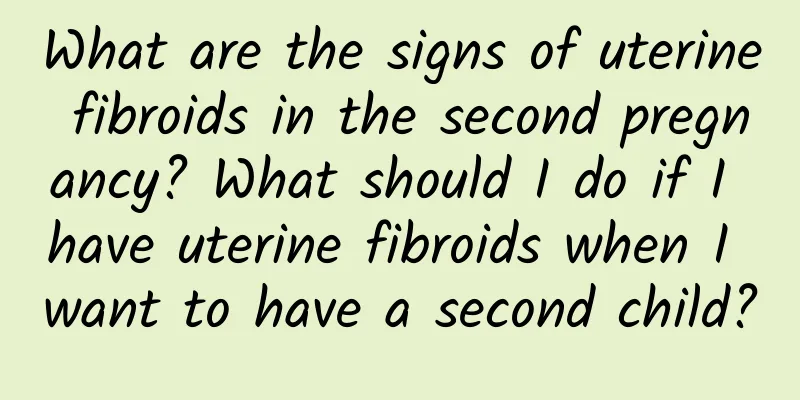How to detect ovulation bleeding

|
In the middle of the menstrual cycle, i.e. during ovulation, due to a temporary drop in estrogen levels, the endometrium loses hormonal support and some of the endometrium sheds, causing regular vaginal bleeding, which is called ovulation bleeding. Traditional Chinese medicine calls it "intermenstrual bleeding." So what are the methods for checking ovulation bleeding? After the mature follicle ruptures and ovulates, the estrogen level drops sharply and significantly, which cannot maintain the growth of the endometrium, causing local rupture and shedding of the endometrial surface, resulting in breakthrough bleeding. With the formation of the corpus luteum of the ovary, sufficient estrogen and progesterone are secreted to quickly repair the ruptured endometrial surface and stop the bleeding. Or it is possible that during ovulation, the mature follicles secrete more estrogen, causing endometrial congestion and leakage of red blood cells. It is also possible that when the egg is captured in the fallopian tube fimbria, the blood-containing follicular fluid is sent to the uterine cavity through retrograde peristalsis of the fallopian tube and then flows out of the cervix through the vagina. It has been reported that when examining the cervical mucus of women who ovulate during the middle of their menstrual period, it was found that about 60% of them had red blood cells under a microscope, but no bleeding was visible to the naked eye. This is not a pathological phenomenon; but women with ovulation bleeding must rule out other diseases of the reproductive tract, such as irregular menstruation, cervical erosion, cervical polyps, endometrial polyps, submucous uterine fibroids, and other gynecological diseases. Ovulation bleeding, also known as mid-menstrual bleeding, refers to a small amount of bleeding between two normal menstrual periods, which may be accompanied by varying degrees of lower abdominal pain The inspection method is as follows: 1. Gynecological examination Pay attention to whether the cervix has erosion and bleeding, and perform cervical TCT examination when necessary to check whether the uterus and bilateral adnexa are tender, thickened, or have lumps (check when necessary and be gentle). 2. Auxiliary examination (2) Signs of ovulation: The basal body temperature is biphasic, B-ultrasound shows normal ovulation, and ovulation changes can be seen in ovulation test strips. Bleeding occurs when the body temperature changes from low to high and when the test strip changes from positive to negative, that is, the ovulation period. (2) Ultrasound examination should be used to exclude other diseases that may cause abnormal bleeding, such as endometrial polyps, submucous uterine fibroids, etc. (3) Hysteroscopy: Hysteroscopy can be performed when necessary to rule out organic lesions such as cervical polyps and endometrial cancer. Clinical manifestations are as follows: 1. Uterine bleeding. In the menstrual cycle with ovulation, uterine bleeding occurs during ovulation. The amount of bleeding is small, and sometimes it is only brown discharge. It usually stops on its own in 23 days, and the longest is 7 days. 2. Abdominal pain: Periodic pain between menstruation, which can be mild or severe, usually lasts for several hours, and in some patients it can last for 23 days. 3. Infertility may be caused by cessation of sexual life due to bleeding during ovulation, thus missing the opportunity to conceive. Note: Generally, there are no obvious positive signs. Diagnostic curettage, basal body temperature measurement (basal body temperature is biphasic, and bleeding occurs when low and high temperatures change), and laparoscopy can confirm the diagnosis. If the symptoms are mild, no treatment is required. If the bleeding is heavy or affects fertility, medication can be used for treatment. |
<<: How is ovulation bleeding diagnosed?
>>: What to eat to treat ovulation bleeding
Recommend
What are the classifications of ovarian cysts and what are the traditional treatments?
What are the classifications of ovarian cysts? Wh...
Celebrity primitive diet loses 10 kg after giving birth
The "Paleo" diet, also known as the cav...
Treat the symptoms of uterine fibroids with a positive attitude
Many patients do not know the symptoms of uterine...
Do you know the causes of dysmenorrhea?
Dysmenorrhea is a problem that many women will en...
Habitual miscarriage is caused by these 5 factors
There are many reasons for women to have habitual...
Obese and tired even though you don’t eat high-calorie foods? Doctor Liu Boen: 4 tips for cleaning your body to lose weight easily
Every October to February of the following year i...
What are the types of cervicitis?
There are many reasons that can cause cervicitis....
Can endometrial tuberculosis be cured?
At present, the treatment of endometrial tubercul...
Be careful of sweet tooth addiction! Nutritionists teach 6 tips for controlling sugar levels
Biscuits, candies and other sweets, when eaten in...
Female curves are out of control! There is a solution to defeat local obesity
As the wedding date approaches, many brides worry...
Methods for female friends to prevent cervical erosion
I believe that the prevention of cervical erosion...
Can I have an abortion if I have leucorrhea inflammation? It is recommended to have an abortion after treatment
If the white discharge is accompanied by inflamma...
The belly woman moves, the handsome man loses weight with a gorgeous yoga move
Are you still immersed in the world of delicious ...
What are the causes of irregular menstruation in infertile women? Introducing massage treatment methods for irregular menstruation
Many people think that irregular menstruation is ...
How long does it take to cure endometrial tuberculosis?
We should actively seek treatment for endometrial...









